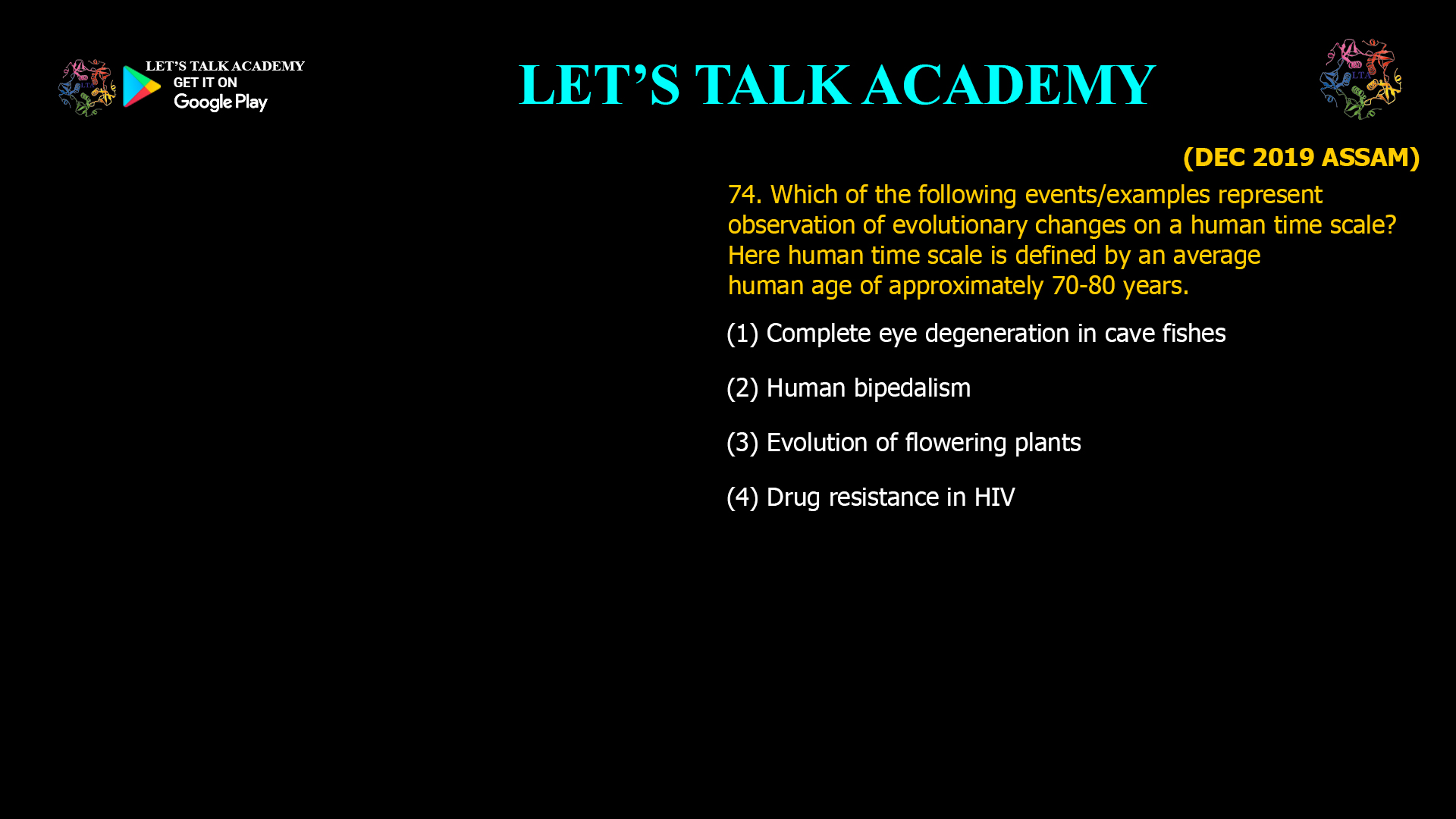- Which of the following events/examples represent observation of evolutionary changes on a human time scale? Here human time scale is defined by an average human age of approximately 70-80 years.
(1) Complete eye degeneration in cave fishes
(2) Human bipedalism
(3) Evolution of flowering plants
(4) Drug resistance in HIVExamples of Evolutionary Changes and Their Time Scales
Let’s examine the options given and determine which represent evolutionary changes observable on a human time scale:
1. Complete Eye Degeneration in Cave Fishes
Eye degeneration in cave-dwelling fish species is a classic example of evolutionary adaptation to a dark environment. However, this process typically takes thousands to millions of years. The loss of eyes involves multiple genetic changes and gradual accumulation of mutations, which is far beyond the span of a human lifetime.
2. Human Bipedalism
Human bipedalism—the ability to walk upright on two legs—is a defining trait of our lineage. This evolutionary change occurred over millions of years, beginning with early hominins around 4 to 6 million years ago. Such a fundamental anatomical and behavioral shift cannot be observed within a single human lifespan.
3. Evolution of Flowering Plants
The origin and diversification of flowering plants (angiosperms) is a major evolutionary event dating back approximately 140 million years. This vast timescale places the evolution of flowering plants well outside the human time scale.
4. Drug Resistance in HIV
The evolution of drug resistance in HIV is a striking example of rapid evolutionary change observable within years or even months. HIV has a high mutation rate and a short generation time, allowing it to quickly develop resistance to antiviral drugs. This evolution directly impacts treatment strategies and patient outcomes and is well documented within the span of individual human lifetimes.
Why Drug Resistance in HIV Represents Evolution on a Human Time Scale
-
Rapid Mutation Rate: HIV’s reverse transcriptase enzyme lacks proofreading ability, resulting in frequent mutations.
-
Short Generation Time: The virus replicates rapidly, producing millions of new virions daily.
-
Strong Selective Pressure: Antiviral drugs create intense selection for resistant variants.
-
Observable Clinical Impact: Resistance emerges during treatment, often within months to years.
This rapid adaptation exemplifies evolution in action on a timescale relevant to human experience.
Summary Table of Evolutionary Events vs. Time Scale
Evolutionary Event Approximate Time Scale Observable Within Human Lifetime? Complete Eye Degeneration in Cave Fishes Thousands to millions of years No Human Bipedalism Millions of years No Evolution of Flowering Plants Over 100 million years No Drug Resistance in HIV Months to years Yes Conclusion
Among the options, drug resistance in HIV is the clear example of evolutionary change that occurs on a human time scale. It demonstrates how evolution is not always a slow process but can happen rapidly under strong selective pressures, especially in organisms with short generation times and high mutation rates.
Correct answer:
(4) Drug resistance in HIV -



